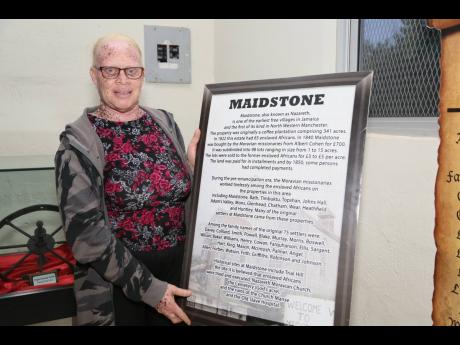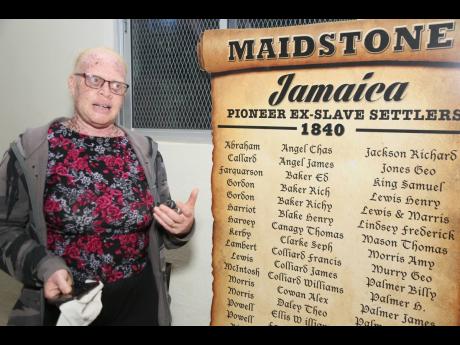The Maidstone Museum – a symbol of the community’s resilience, rich heritage
THE MAIDSTONE Museum represents the storied journey to emancipation for the ancestors of the proud residents of the northwestern Manchester community.
Officially opened in 2015 by then Minister of Tourism Dr Wykeham McNeill and Mikael Phillips, member of parliament for Manchester North Western, the museum houses artefacts used by slaves and slave masters in the 19th century.
Branding irons owned by slave masters – testament to the abuse meted out to slaves; pots and clothes iron used by slaves, and whipsaws are some of the rare pieces in the museum.
Maidstone, also known as Nazareth, is one of the earliest free villages in Jamaica. The 341-acre property, which was originally a coffee plantation, was home to some 300 enslaved Africans. Other historic sites in Maidstone include the Nazareth Moravian Church, the God's Acre cemetery; a private burial ground reserved for slaves masters, ruins of the old slave hospital, and Trial Hill – the place where it is believed that enslaved Africans were tried and executed.Curator Ava Frith told The Gleaner that the museum is a stellar part of preserving the legacy of Maidstone. Frith said the emancipation commemorative period is a very proud time for community folk, as they celebrate the strength and resilience of their forefathers, which has given them hope and the ultimate gift of freedom.
“I'm proud because I'm a direct descendant of an ex-slave, and many persons in this community are, so we know our roots and we are very, very proud of the legacy that our forefathers have left behind, so much so that certain things are maintained, for example, the stone walls... People still build stone walls because it is indicative of the area and still remind us that this is a part of our history, and we're not keen on just knocking down old buildings if it is not necessary,” said Frith, referencing the Moravian church, which she described as an integral part of Maidstone's legacy.
The first church was built in 1834, but was relocated and rebuilt in 1890 by ex-slaves.
“There was a church before that one over a place called Adam's Valley. That church was built in 1834 and when the population outgrew it, they pulled the building apart, stone by stone, and they came through the hills and built that church on top of the hill there. That church was started in 1888, and it took a record two years to finish, so by 1890, the church was completed. Can you imagine there were no power tools, and these people were able to use the chisel and hand tools to carve out a building like that? It is impressive,” Frith shared proudly.
In 1987, the Nazareth Moravian Church copped a Jamaica National Heritage Trust Award for being one of the best-kept historic churches in Jamaica.
Trial Hill, however, is a stark reminder of the atrocities endured by Maidstone ancestors. According to Frith, Trial Hill is an area that the community has sidelined, as it is believed to be the site where slaves met their brutal demise.
Frith told The Gleaner that history suggests that other slaves were taken to the hill to witness the execution of fellow slaves, as a means of deterring rebellion. Frith said visits to the site when she was younger always gave her an “eerie feeling”.
“As a child, before I knew the history, I used to go up there and tie goats, and I had an eerie feeling. I didn't know why. I felt like somebody was watching me. But in latter years, I realised that probably the ghosts of the ex-slaves are up there,” she said.
MUST BE PRESERVED
Stakeholders are adamant that the history of Maidstone must be preserved. and passed down to other generations. Every October, the museum facilitates tours aimed at educating students on Maidstone's history.
“It's part of the curriculum, and it is so much more exciting because they are in a historical community, so they are reminded and taught of their history,” said Frith.
The museum facilitates tours on weekdays at a cost of $500 for adults and $200 for children.
Frith boasted that her foreparents were among the first 75 ex-slave settlers in Maidstone. Mounted inside the museum is a memorial featuring the names of 'pioneer ex-slave settlers'. These ex-slaves were the first to purchase land in the area after it was declared a free village.



